You know, after that very video where Tennessee Titans QB Will Lewis not onlyputs mayo in his cup of coffee, but then drinks it with visible pleasure, I thought it would be difficult to surprise me with anything. As it turns out, reality always throws new ideas at us – each one crazier than the last. Even if the source of the idea is a respected college professor.
A few days ago, Michelle Francl published a book calledSteeped: The Chemistry of Tea, which examines in detail the methods of preparing the world’s most popular beverage from the point of view of a chemist. And one thesis from this book literally infuriated the Brits, who considered this almost a desecration of their national drink.
More info:X
This American chemistry professor recently published a book dedicated to tea-brewing through the eyes of a chemist
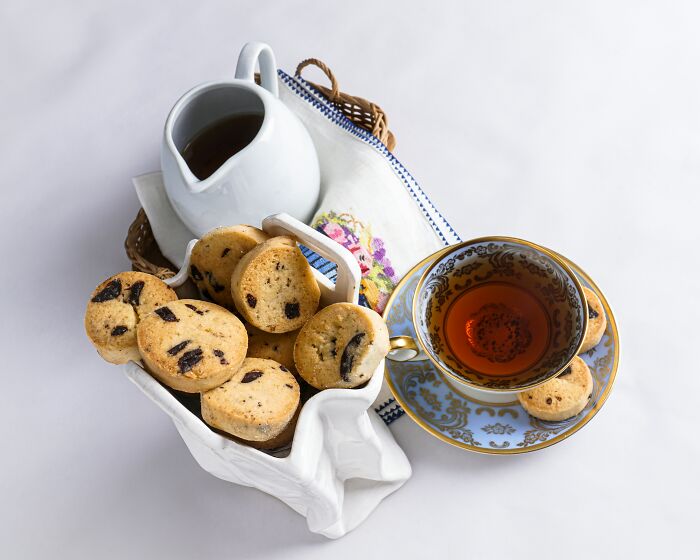
Image credits:Anna Stampfli (not the actual photo)
Let’s immediately put aside any doubts about the competence of the author – professor Michelle Francl is an honored and outstanding American scientist, and oncewas one of the 1000most cited chemists around the world. Professor Frankl has been teaching chemistry at Bryn Mawr College in Pennsylvania since 1986, andwas awarded the American Chemical Society’s Philadelphia Section Awardin 2019.
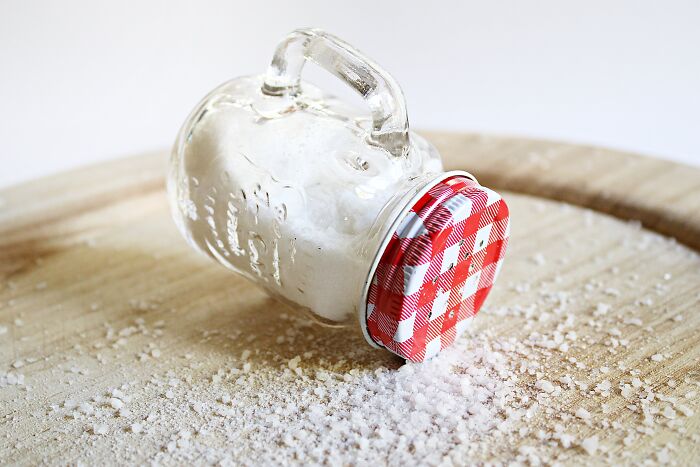
Image credits:Lorena Martínez (not the actual photo)
In this book, the author gives several wholesome pieces of advice for an ideal tea cup – but also urges us to add a pinch of salt in there
In her book, the author studied not only the chemical processes that occur when dried tea leaves come into contact with hot water, but also combed through many historical recipes for tea-brewing, in search of a kind of Holy Grail of all tea-lovers, the ideal cup of tea.
In particular, among the tips that Professor Francl gives are to use large tea bags so that the leaf fragments can move after being immersed in water, to pre-heat the cup before pouring the tea, and to use short, stout mugs (according to the author, they have less surface area, thus keep your tea hotter).
“Add a pinch of salt,” the author of the book wrote. “The sodium ion in salt blocks the chemical mechanism that makes tea taste bitter, especially when it has been stewed.” Period. The juggernaut of British national outrage over the desecration of their sanctuary on X was inexorably set in motion…
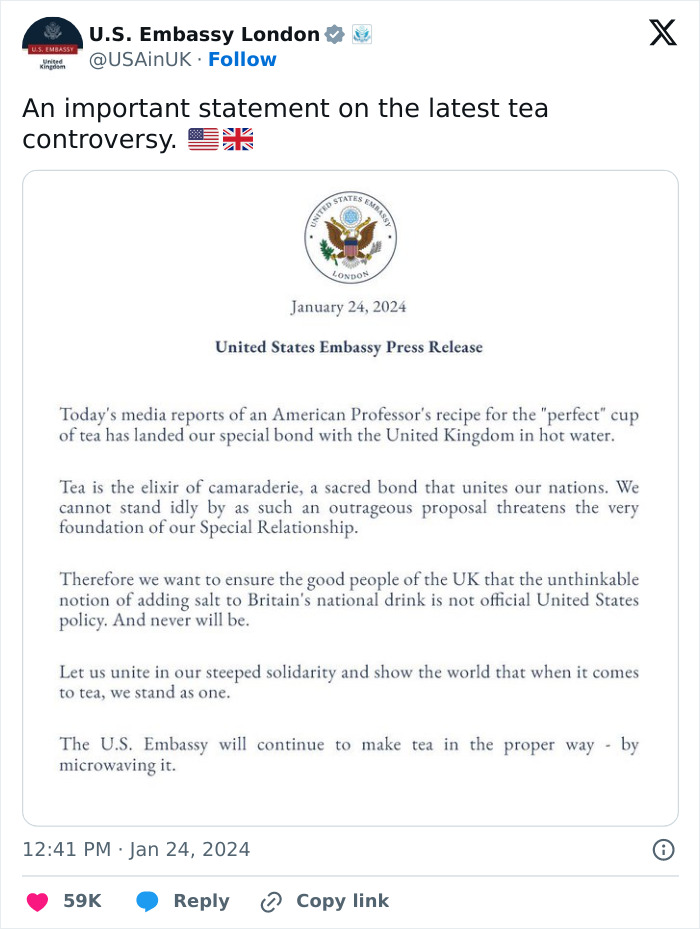
Image credits:USAinUK
Firstly, the residents of Albion, hurt in the best of feelings, demand that the Americans stop advising them how to properly brew their own national drink. Secondly, British tea-lovers consider adding salt to tea almost a form of perversion. Thirdly… probably two points will be enough.
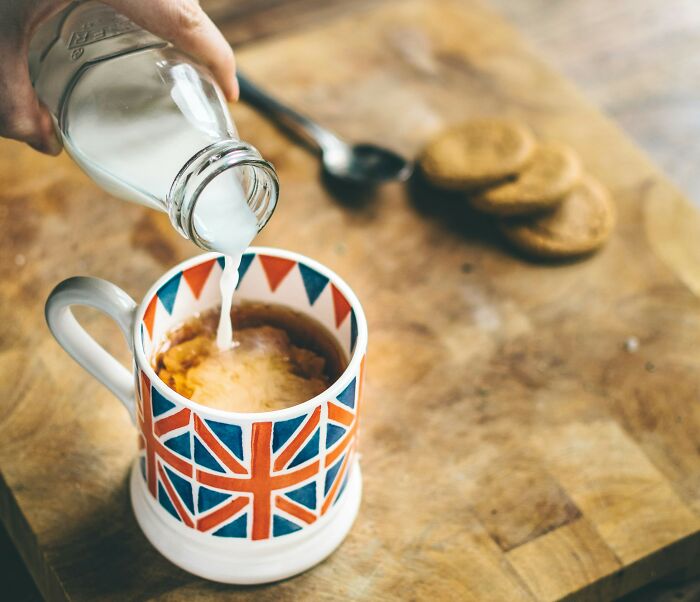
Image credits:Calum Lewis (not the actual photo)
The U.S. embassy in London also joined the thread with a beautifully brewed cup of trolling
It seems that relations between the countries after this were literally on the verge of breaking. “America… You are Dangerously Close to Declaring War with us Brits!” one of the Britons wrote on X. “Also – We do appreciate you NOT using salt in your drink that you Hliariously call ‘Tea’. Proper Tea, (and we should know) is made with Boiled water from a Kettle. NOT F* ****G MICROWAVED.”
Well, great trolling from the embassy, probably referring us tothis viral TikTok video. And the thread itself turned out to be funny, playing on the eternal contradictions between the Americans and the Brits. On the other hand, if we ignore British national pride, then many Asian peoples (where tea, in fact, takes its historical roots) have indeed been adding salt to tea for many centuries.
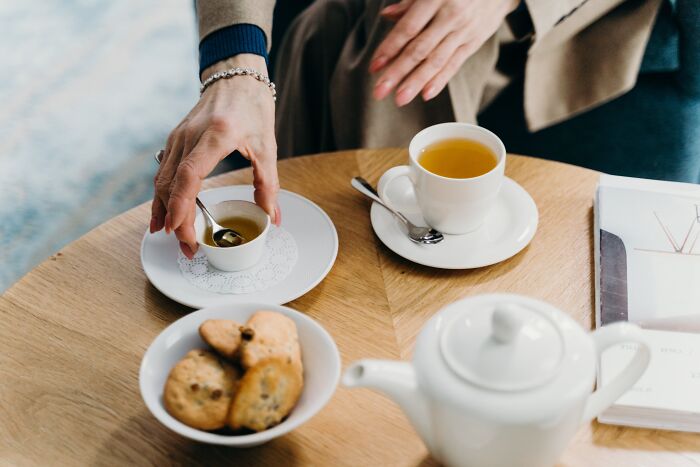
Image credits:cottonbro studio (not the actual photo)
Meanwhile, many nations in Asia actually have been adding salt to tea literally for centuries
For example, in Tibet, from time immemorial, a pinch of salt has been added to tea – precisely for the same purpose that Professor Francl writes about. And, for example, in Mongolia, there is the so-called ‘Suutei tsai’ – a traditional drink that is prepared on the basis of green tea and milk, with the addition of fat, salt, flour and rice. A description of this drink can be found in the chronicle of Guillaume de Rubrouck, a Flemish monk who visited the Mongol Empire in the mid-13th century.
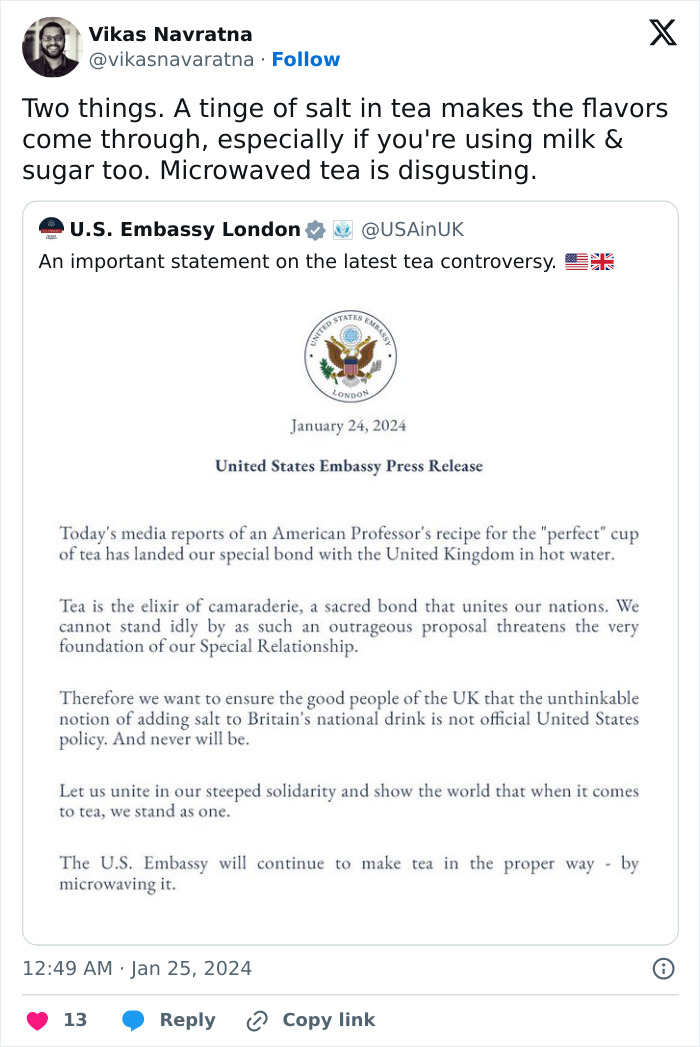
Image credits:vikasnavaratna
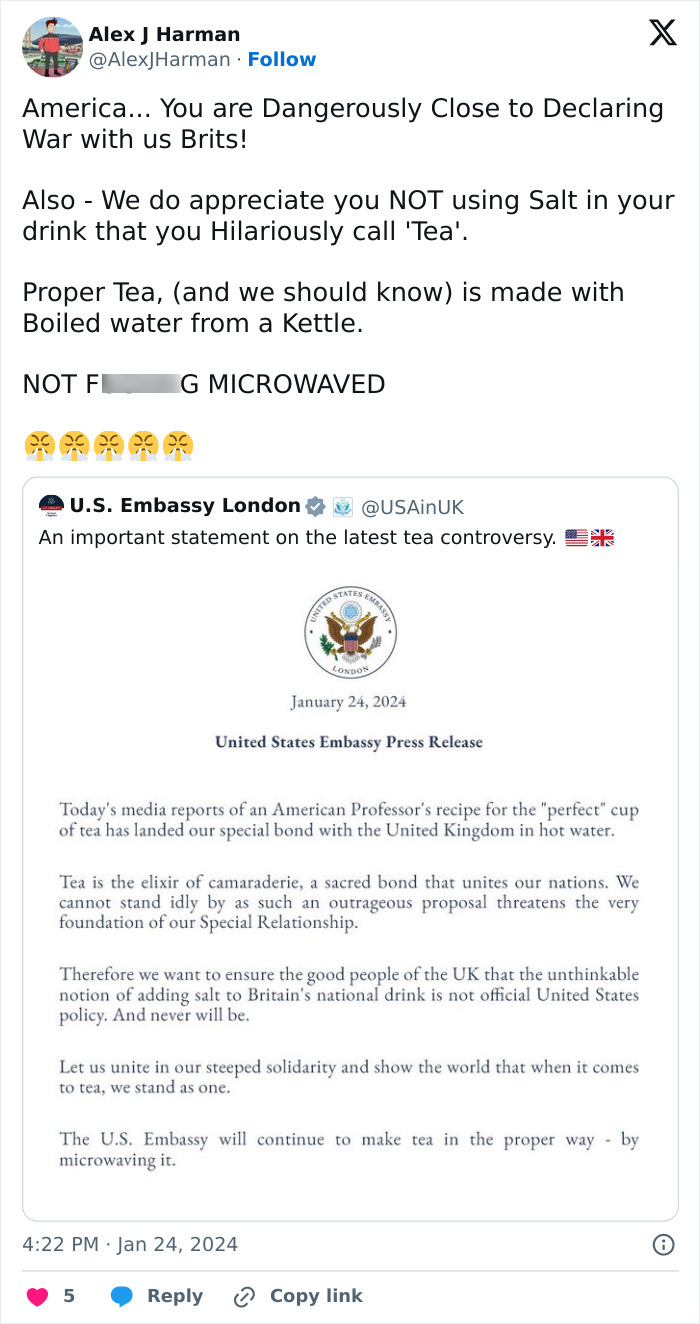
Image credits:AlexJHarman
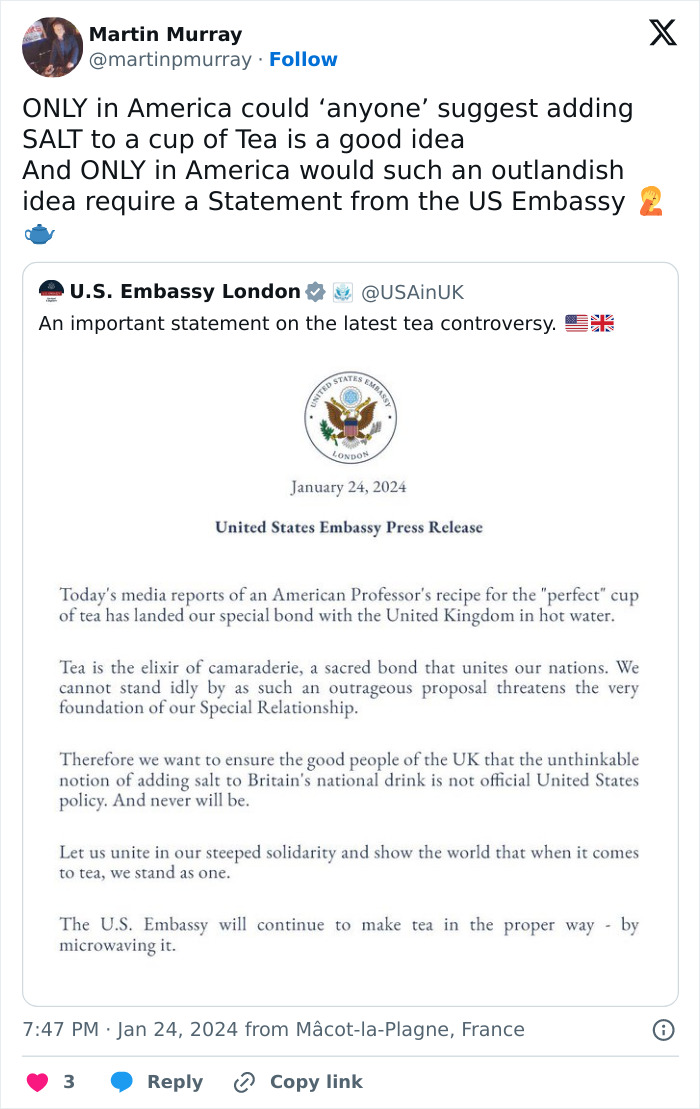
Image credits:martinpmurray

Image credits:Number10cat
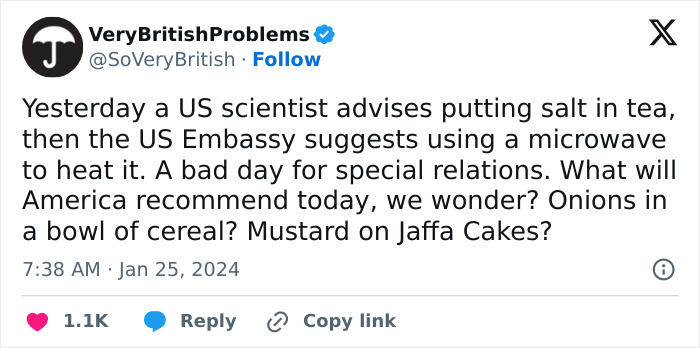
Image credits:SoVeryBritish

Image credits:strallweat

Image credits:Specsavers
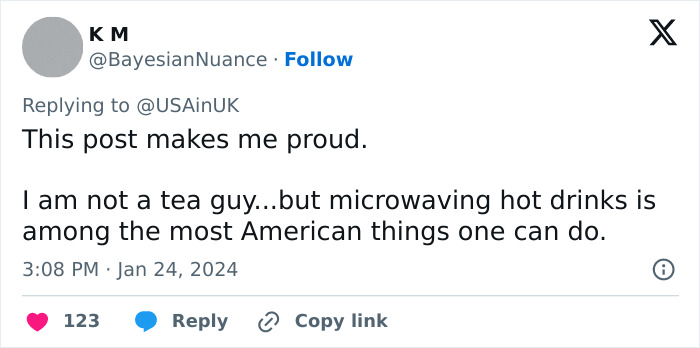
Image credits:BayesianNuance

Image credits:tina0402x

Image credits:sultrysunset

Image credits:John73014818

Image credits:NomosEvents

Image credits:Terrytweetsnice

Image credits:Vike_FF

Image credits:RobertsIsobelle

Image credits:JaseAlanRoberts
Thanks! Check out the results:
Food